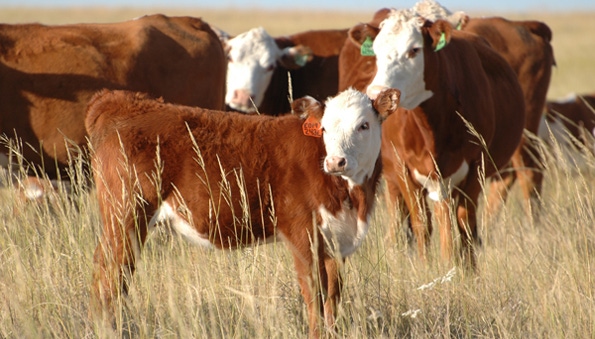Cool spring, late summer, high fertilizer prices
Is it worth fertilizing your warm season grasses?
June 14, 2021

Even though we know what is going to happen to us in July and August, it is difficult not to complain about the unseasonably cool and wet spring we have had in Oklahoma. But, most of the grazeout wheat and annual ryegrass planted for spring pastures are played out, the wheat hay season is not going well, and our warm-season grasses haven’t really started growing yet.
On top of everything else, fertilizer has seen price increases reminding us of the price increases we saw in 2007 (and again in 2012). Earlier this spring retail diammonium phosphate (DAP) went up 22% in one month while urea went up 18%. As of the last week of May, the average retail price of urea was $523/ton (39% higher than last year), DAP was $652/ton (59% higher than last year), and potash was $443/ton (21% higher than last year).
When prices increased so rapidly earlier in May, one COOP manager I talked to said he had a shortage of fertilizer spreaders because everyone was trying to get their summer pastures fertilized before prices went even higher. While it is often a good idea to fertilize your bermudagrass and Old World Bluestem pastures in early May, this year it may have caused more problems than solutions.
Bermudagrass and other warm-season perennials grow well when daytime temperatures are over 80°F, but do not start rapid growth until nighttime temperatures are higher than 60°F for a consecutive week. Fertilizing bermudagrass early will actually provide nutrients to cool-season annuals, many of which are short lived or low in nutritive quality like cheat, Japanese brome, or little barley. When the cool-season annual grassy weeds take up fertilizer they will outgrow the warm-season perennial grasses and shade them out, further slowing their growth and reducing early summer production.
With higher fertilizer prices, is it even worth fertilizing our introduced warm season grasses?
As a rule of thumb, for bermudagrass and other introduced warm-season perennials, each pound of N fertilizer will add about 30 to 40 pounds of forage production per acre, a boost which can double carrying capacity of your pastures.
Generally, a calf value to N cost ratio of 2.5 would indicate fertilization is potentially profitable.
With N fertilizer costing about $0.57/lb of actual N, if calves are sold next fall at an average price of $1.60/cwt the ratio is 2.8. So, if long term prices of fertilizer are increasing or prices of calves fall, adjustments in fertilization, addition of legumes, and changes in grazing management would be warranted.
If cow stocking rates currently in use are based on fertilized pastures, stocking rates will need to be reduced in unfertilized pastures or weaning weights and rebreeding percentage will suffer.
Another rule of thumb is that for each pound of actual nitrogen we can expect stocker calf gain per acre to increase by 1.5 to 2 pounds.
At the current price of urea ($0.57/pound of actual N) each additional pound gain from N fertilization will cost 30 to 40 cents, which will be profitable if the value of stocker gains are higher.
Stocking rates of growing cattle will need adjustments without fertilization or rates of gain will decrease, unless extra supplementation is provided.
All rules of thumb are based on soils with adequate phosphorus (P) and potassium (K). If additional P and K are needed costs will increase. Which goes back to the old recommendation, build up soil fertility (especially P and K) when cattle prices are high or fertilizer is cheap, then when things get sideways you can mine the excess that was built up.
This cannot be emphasized enough…soil test and use these recommendations to make the most effective decisions.
You May Also Like
.png?width=300&auto=webp&quality=80&disable=upscale)


